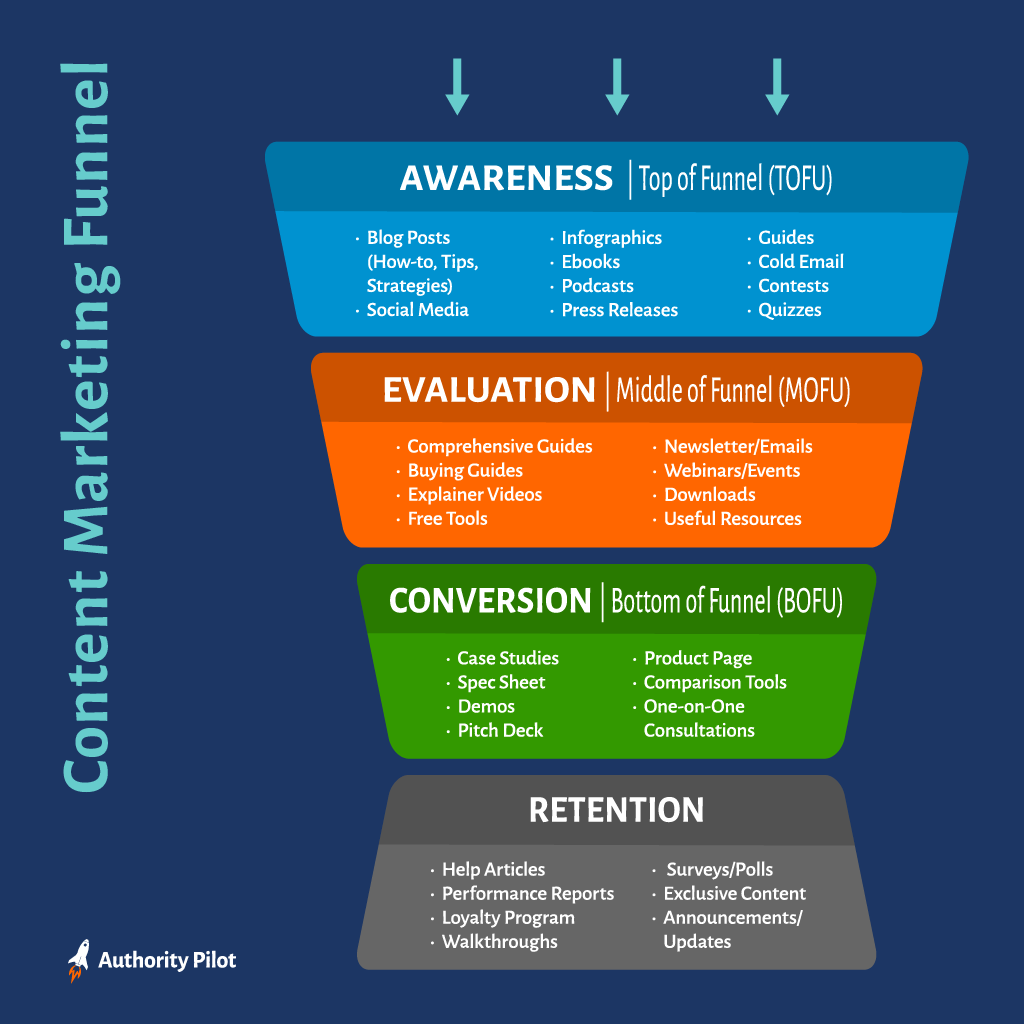
Many businesses struggle with the overwhelming task of standing out while connecting meaningfully with their audience. Without a clear and effective content marketing strategy, efforts often lead to wasted time and missed opportunities to grow your brand and generate leads. But there’s good news: with a well-structured plan, content marketing becomes a powerful and cost-effective tool to achieve your goals.
This guide will provide the blueprint you need to build an effective content marketing strategy that drives results, whether you’re a seasoned marketer or a small business owner taking your first steps.
Understanding Content Marketing Strategy
Importance of Content Marketing
Content marketing has become essential for businesses aiming to stand out and succeed. It plays a key role in building brand awareness, attracting leads, and maintaining customer loyalty. Compared to other methods, content marketing is both more affordable and more effective. DesignLoud reports that it delivers 300% more leads per dollar than paid search marketing while being 62% less expensive than traditional outbound approaches. Additionally, adopting a well-executed B2B content marketing strategy offers even greater cost savings and higher lead generation.
Using creative and engaging formats like videos, blogs, and whitepapers inspires innovation and originality. To stand out in a competitive market, marketers need to rely on storytelling, interactive content, and data-driven approaches to effectively capture and maintain their audience’s attention (InMotion Marketing).
Components of a Successful Strategy
Developing a successful content marketing strategy requires several essential elements. The following list outlines these key components, providing the foundation for building a strong and effective plan:
- Define Clear Goals and Objectives
Identify what you want to achieve with your content, whether it’s building brand awareness, generating leads, or retaining customers. - Conduct Audience Research and Create Personas
Gain a deep understanding of your audience’s preferences to craft relevant content. Develop detailed customer avatars or personas to guide your efforts (see our guide on creating customer avatars). - Plan and Develop Content
Strategize a mix of content types and formats, including videos, blogs, and interactive materials. For tips, explore our section on diversifying content mediums. - Optimize for SEO
Make your content search-engine friendly to enhance visibility. Learn more in our article on SEO content marketing strategy. - Maintain Consistent Brand Messaging
Ensure your brand voice and messaging remain uniform across all content to build trust and recognition. - Distribute Content Effectively
Use the right channels, such as social media, email campaigns, and your blog, to reach your audience. Check out our tips on social media content marketing strategy. - Leverage Data-Driven Insights
Analyze data to evaluate your content’s performance and make informed improvements. Visit our section on leveraging data-driven decisions for practical advice. - Monitor Performance and Adjust
Regularly track key metrics and refine your strategy based on the results. For guidance, see our section on analyzing content marketing performance.
By applying these key components, we can create a strong framework for a content marketing strategy. To illustrate some of these elements, the table below compares the costs and lead generation efficiency of content marketing with other approaches:
| Marketing Method | Cost Efficiency | Lead Generation Efficiency |
|---|---|---|
| Content Marketing | 62% cheaper | 300% more leads |
| Paid Search (PPC) | Higher Cost | Lower lead yield |
| Outbound Marketing | Higher Cost | Lower lead yield |
Figures provided by DesignLoud
To access templates and explore more in-depth guidance on creating a successful strategy, check out our comprehensive content marketing strategy template.
Analyzing Content Marketing Performance
Key Metrics for Evaluation
To achieve the desired outcomes of a content marketing strategy, it’s essential to carefully monitor and evaluate its performance. By focusing on specific key performance indicators (KPIs), we can gain insights into what’s working and identify areas for improvement. These metrics provide measurable benchmarks that align with our goals, ensuring that every effort contributes to overall success. For additional insights on evaluating performance, explore our guide on analyzing content marketing performance.
| Metric | Description | Importance |
|---|---|---|
| Traffic Metrics | Unique visitors, return rates, and session duration measure audience interest (Outbrain). | Evaluates the reach and relevance of your content. |
| Engagement Metrics | Time on page, shares, comments, and interactions gauge audience engagement. | Reflects how effective and resonant your content is with the audience. |
| Conversion Metrics | Tracks actions like form submissions, downloads, and purchases. | Indicates how well your content drives user actions and generates leads. |
| SEO Metrics | Measures organic traffic, keyword rankings, and backlinks. | Reflects the visibility and authority of your content in search engines. |
| Brand Awareness Metrics | Social mentions and brand searches highlight audience recognition. | Demonstrates healthy brand recognition and content marketing success. |
Understanding and utilizing key metrics is important in terms of assessing the success of your content marketing strategy and ensuring it aligns with your broader marketing objectives. Each metric provides valuable insights into different aspects of performance. Traffic metrics, such as unique visitors and session duration, give an overview of your content’s reach, showing how many people are discovering and exploring your materials.
Meanwhile, engagement metrics, like shares, comments, and time spent on the page, delve deeper into how your audience interacts with your content. High engagement suggests that your content resonates with your target audience and keeps them interested. Conversion metrics, such as downloads, form submissions, and purchases, take it a step further by illustrating the effectiveness of your content in driving meaningful actions, turning interest into tangible results.
Benefits of Content Analytics
Implementing a strong analytics framework offers numerous benefits and drives the continuous improvement of our content initiatives.
- Data-Driven Decision Making. Nearly 60% of marketers agree that strategies based on data outperform those driven by intuition. Leveraging detailed analytics allows for informed decision-making that boosts the effectiveness of content and improves ROI.
- Enhanced Content Creation. Insights from engagement and traffic metrics help shape content that aligns with audience interests. For instance, long-form content of approximately 2,000 words often ranks higher on search engines and garners more backlinks, increasing visibility and authority.
- Boosted Lead Generation. Analytics identifies which content types perform best for conversions. Studies show that content marketing generates three times more leads per dollar compared to paid search, while being 62% less expensive than outbound marketing methods (DesignLoud). Additionally, small businesses with blogs experience a 126% increase in lead growth.
- Improvement Through A/B Testing. A/B testing enables comparison of different content formats and strategies. This data-driven refinement ensures your content marketing efforts remain effective, relevant, and aligned with audience expectations.
- Deeper Customer Insights
Performance tracking provides a better understanding of audience preferences, allowing content to be tailored to their specific needs. This approach builds stronger connections and fosters meaningful engagement with your target market (Ronin).
Making the most of these metrics and their benefits guarantees that your SEO content marketing strategy performs at its best while adapting to the ever-changing needs of your audience. For detailed guidance on building your strategy, check out our comprehensive content marketing strategy template.
Understanding the Content Marketing Funnel
A successful content marketing strategy requires guiding your audience through every stage of the journey—from awareness to loyalty. The content marketing funnel is a powerful framework that helps organize your efforts and ensures you’re meeting your audience’s needs at the right time.
1. Awareness (Top of Funnel – TOFU):
This stage is all about attracting potential customers. Content types like blog posts, infographics, social media updates, and guides are ideal for building brand visibility and generating interest.
2. Evaluation (Middle of Funnel – MOFU):
Here, your audience evaluates whether your brand offers solutions to their needs. Offer content such as buying guides, explainer videos, and free tools to establish credibility and build trust.
3. Conversion (Bottom of Funnel – BOFU):
This stage focuses on converting leads into customers. Content like case studies, product comparisons, and one-on-one consultations can help close the deal.
4. Retention:
After conversion, focus on nurturing your customer relationships. Content such as newsletters, loyalty programs, and exclusive updates help retain customers and build loyalty.
The infographic below illustrates this funnel, providing a clear visual representation of how to align your content with each stage:

Effective Content Marketing Types
Expanding the variety of content formats and embracing innovative approaches are key to crafting a successful content marketing strategy. Whether you’re a business owner, marketing professional, or decision-maker, exploring diverse content types is crucial for fostering brand growth and driving lead generation.
Diversifying Content Mediums
Incorporating various content marketing formats can significantly expand your brand’s reach and improve audience engagement. By utilizing a mix of content types, you can connect more effectively with audiences worldwide (Sociallyin).
| Content Medium | Engagement Level (1-10) | Global Reach (%) |
|---|---|---|
| Blog Posts | 7 | 65 |
| Videos | 9 | 80 |
| Infographics | 6 | 55 |
| Webinars | 8 | 70 |
| Podcasts | 7 | 60 |
| Social Media Posts | 9 | 85 |
- Blog Posts: Educational content helps customers make informed decisions by addressing their questions and providing valuable insights.
- Videos: With nearly 50% of people watching over an hour of video ads weekly, video content continues to gain traction. “How-to” videos, in particular, are highly effective at capturing interest (Metric Marketing).
- Infographics: An excellent way to present data and statistics in an engaging and visually appealing format.
- Webinars: These live events allow businesses to demonstrate expertise, foster audience connections, and drive sales.
- Podcasts: Ideal for in-depth discussions and connecting with audiences during commutes or other on-the-go moments.
- Social Media Posts: A powerful tool for real-time engagement and sharing updates quickly and effectively.
For a step-by-step approach, check our content marketing strategy template.
Harnessing Innovative Techniques
Content marketing has transformed into a dynamic and multifaceted discipline, utilizing storytelling, interactive elements, and data-driven approaches to captivate and connect with audiences (InMotion Marketing). Consider these innovative techniques:
- Storytelling: Develop engaging narratives that connect with your audience on an emotional level and reflect their experiences.
- Interactive Content: Utilize tools like quizzes, polls, and interactive infographics to boost engagement and keep users on your site longer.
- User-Generated Content: Foster trust and community by encouraging your audience to create and share their own content.
- Personalization: Deliver content tailored to individual preferences to enhance relevance and improve its impact.
- Virtual and Augmented Reality: Leverage these immersive technologies to create memorable and engaging content experiences.
- Voice Search Optimization: Adapt content for voice search queries to improve accessibility and enhance visibility as voice search becomes increasingly common.
Diversifying content formats and integrating innovative approaches allows us to build a strong content marketing strategy that captures the attention of our target audience and fuels business growth. To explore specific tactics, check out our resources on video content marketing strategy and social media content marketing strategy.
Maximizing Lead Generation
To succeed in today’s competitive market, it’s essential to enhance lead generation by utilizing data-driven insights and crafting engaging, well-planned content.
Leveraging Data-Driven Decisions
Relying on data to inform decisions is essential for a successful content marketing strategy. This method enables more precise audience targeting, ensuring resources and efforts are optimized for maximum return on investment.
Content marketing has proven to deliver 300% more leads per dollar spent compared to paid search (PPC) marketing, all while being 62% more cost-effective than traditional outbound methods. The table below highlights the cost-efficiency of content marketing:
| Marketing Type | Cost Effectiveness | Lead Generation Efficiency |
|---|---|---|
| Content Marketing | 62% cheaper | 300% more leads |
| Outbound Marketing | Baseline | Baseline |
| PPC Marketing | More expensive | Less efficient |
By applying these insights, we can focus on content marketing as a core strategy to achieve superior results while minimizing costs.
Engaging Content Planning
Creating content that captures audience interest is key to driving lead generation. Consistent and engaging content is particularly impactful, with small businesses that maintain blogs experiencing a 126% increase in lead growth.
Our content planning should address all stages of the buyer’s journey, ensuring relevance and engagement at each step. This includes:
- Awareness Stage: Utilize blog posts, social media content, and infographics to introduce your brand and educate potential customers.
- Consideration Stage: Offer e-books, webinars, and white papers to provide in-depth information and address specific needs.
- Decision Stage: Share case studies, testimonials, and product demos to build trust and help customers make informed choices.
- Purchase Stage: Use personalized communication and exclusive discounts to encourage conversions.
- Retention Stage: Keep customers engaged with newsletters and loyalty programs that reinforce their connection to your brand.
- Advocacy Stage: Encourage reviews and user-generated content to turn satisfied customers into brand advocates.
Developing a content calendar helps outline your strategy and ensures the consistent publication of engaging and relevant content. For practical examples and ready-to-use templates, refer to our academy article on How to Develop a Content Strategy.
By combining data-driven decision-making with structured content planning, you can significantly enhance lead generation and fuel business growth. For more guidance, explore our insights in the B2B content marketing strategy article.
Audience Research in Content Marketing
Knowing your audience is essential for developing a successful content marketing strategy. Through comprehensive audience research, you can create content that aligns with their unique needs and preferences. This section focuses on two key aspects: building detailed customer avatars and customizing content to suit audience preferences.
Creating Customer Avatars
Customer avatars, also known as buyer personas, are comprehensive profiles that represent your ideal customers. By combining demographic and psychographic data, these profiles help you craft content that truly connects with your audience on a meaningful level.
Steps to Create a Customer Avatar:
Demographic Information:
- Age
- Gender
- Location
- Income
- Occupation
Psychographic Data:
- Interests
- Values
- Lifestyle
- Pain points
- Buying behavior
Data Sources:
- Surveys and interviews
- Website analytics
- Social media insights
- Customer feedback
Bringing these elements together provides a detailed understanding of our target audience. This insight enables us to create highly focused and impactful content, boosting both engagement and conversion rates.
Tailoring Content to Audience Preferences
After creating customer avatars, the next step is to customize content to match your audience’s preferences. This requires identifying the platforms they use most and the types of content they find most engaging (LinkedIn).
Preferred Platforms for Different Demographics:
| Platform | Demographic | Content Type |
|---|---|---|
| 35-60 years | Articles, videos, and community posts | |
| 18-34 years | Photos, short videos, and stories | |
| Professionals | Articles, thought leadership posts | |
| TikTok | 16-24 years | Short, engaging, and trending videos |
With this data, we can refine our content distribution to achieve greater visibility and engagement. Establishing Key Performance Indicators (KPIs) further allows us to evaluate how effectively our content aligns with audience preferences. For additional insights, check out our guide on defining KPIs.
Thorough audience research and tailored content are the foundation of a successful content marketing strategy. By creating precise customer avatars and customizing content to meet their needs, we can enhance relevance, boost engagement, and maximize the overall impact of our efforts. For more techniques, explore our content marketing strategy framework.
Measuring Marketing Effectiveness
Measuring the success of our content marketing strategy is crucial for sustaining growth and achieving long-term results. By establishing clear Key Performance Indicators (KPIs) and performing multi-channel data analysis, we can evaluate the effectiveness of our efforts and make data-driven adjustments to improve our strategy.
Defining Key Performance Indicators (KPIs)
Key Performance Indicators (KPIs) play a vital role in evaluating the success of marketing campaigns. They translate broader objectives into specific, measurable metrics that help track progress and ensure the overall effectiveness of your strategy (Santa Clara University). Below are some commonly used KPIs in content marketing:
- Traffic Metrics: Website visits, unique visitors, page views.
- Engagement Metrics: Average session duration, bounce rate, social shares.
- Conversion Metrics: Lead generation, form submissions, sales conversions.
- SEO Metrics: Organic search traffic, keyword rankings, backlinks.
- Email Metrics: Open rates, click-through rates, unsubscribe rates.
These metrics provide valuable insights, allowing us to adjust and refine our content marketing strategy to better meet our objectives. For more detailed examples, visit our content marketing strategy examples page.
Multi-Channel Data Analysis
Multi-channel data analysis provides a complete view of your marketing performance across different platforms. By implementing robust tracking and analysis systems, you can gain deeper insights into your audience, assess campaign effectiveness, and make informed, data-driven decisions.
Key steps for effective multi-channel data analysis include:
- Establishing tracking tools, such as Google Analytics, social media insights, and email campaign analytics.
- Assigning performance metrics to specific channels to evaluate their impact.
- Comparing metrics across channels to identify strengths and areas for improvement.
- Refining strategies based on the findings to enhance overall performance.
| Channel | Metric | Tracking Tool |
|---|---|---|
| Website | Page Views | Google Analytics |
| Social Media | Engagement Rate | Social Media Insights |
| Open Rate | Email Marketing Platform | |
| SEO | Organic Traffic | Google Search Console |
| Ads | Return on Ad Spend (ROAS) | Ad Platforms (Google Ads, Facebook Ads) |
For marketers aiming to grow their brand and boost lead generation, mastering the details of multi-channel data analysis is essential. Explore our SEO content marketing strategy and social media content marketing strategy sections for detailed guidance.
By establishing clear KPIs and leveraging multi-channel data analysis, you can effectively measure the success of your content marketing strategy and ensure that your efforts align with your business objectives.
Bringing It All Together
Crafting an effective content marketing strategy requires a thoughtful combination of audience understanding, data-driven decisions, and creative content planning. From defining clear goals and building detailed customer avatars to diversifying content formats and leveraging innovative techniques, every step plays a role in engaging your audience and driving results.
By continuously monitoring performance through key metrics and multi-channel data analysis, you can refine your strategy to ensure it aligns with your business objectives. Remember, successful content marketing is not a one-time effort but a dynamic process that evolves with your audience’s needs and market trends.
With the tools, templates, and insights shared in this guide, you have the foundation to build a robust strategy that not only attracts attention but also converts engagement into tangible business growth. Let this blueprint serve as your guide to navigating the path toward lasting content marketing success. For further resources, visit our content marketing strategy template.







